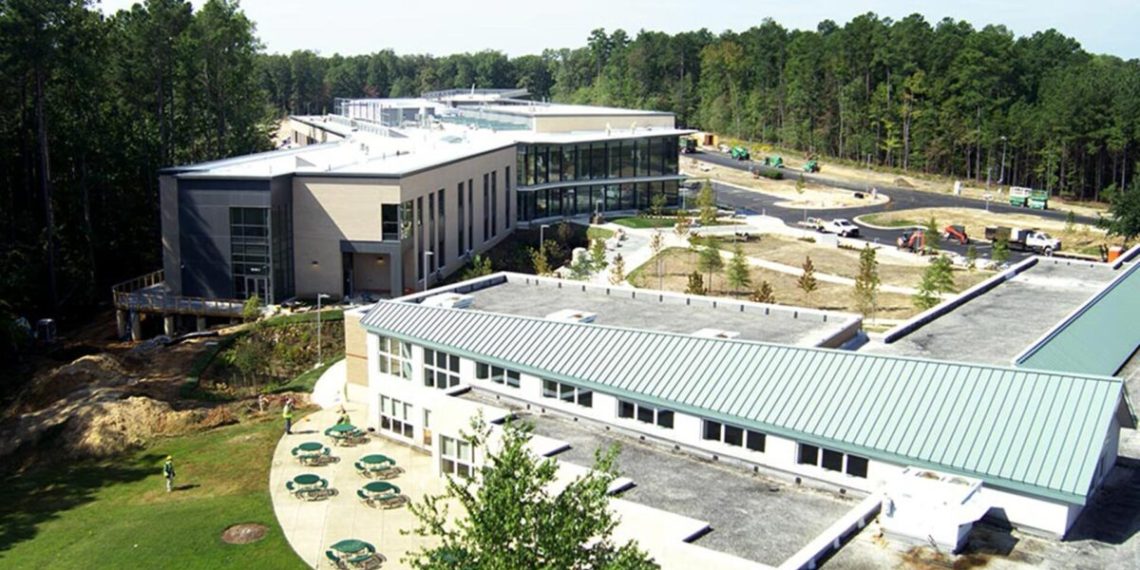A major new academic and research building opened today by the University System of Maryland at Southern Maryland will emphasize autonomous systems and robotics innovation in concert with faculty and staff from the University of Maryland.
State of Maryland leaders joined University System of Maryland (USM) Chancellor Jay A. Perman and UMD President Darryll J. Pines at the opening of the new Southern Maryland Autonomous Research and Technology (SMART) Building, an $86 million, 84,000-square foot academic and research facility that nearly doubles the regional education center’s educational footprint.
“The SMART Building is distinctive for being so important to two missions: on the academic side, allowing us to educate more Southern Maryland students, and on the research side, giving us the kind of state-of-the-art space USMSM needs to pioneer unmanned systems technology,” said Perman. The building “ushers a new age of education and innovation in a region that’s got so much to contribute to Maryland.”
In the new classrooms, students will have enhanced access to in-demand educational programs—including some taught by UMD faculty—giving these students the opportunity to live, work and study close to home. Meanwhile, the innovation half of the SMART Building features a massive Unmanned Autonomous Systems (UAS) research facility, which will include sea, air and land capabilities. The facility will make the University System of Maryland at Southern Maryland the USM’s only regional higher education center with a research component.
Pnes thanked the assembled crowd for working to make the SMART Building a reality, and said careers can hinge not just on what students learn or who teaches them, but advanced learning spaces as well.
“In retrospect, I see clearly that without the experience of having access to a first-class engineering facility, I would not have found the trajectory I would need to realize my goals and some dreams,” he said. “That’s what this SMART Building will accomplish for so many here today.”
The new facility’s connection to UMD will be strengthened by the A. James Clark School of Engineering’s appointment of UAS expert Matthew Scassero as director of research, innovation and outreach to work specifically with USMSM.
Scassero, a retired U.S. Navy captain, also directs the UMD Unmanned Aircraft Systems Test Site, located right up the road from USMSM. Faculty, staff and students at the UAS Test Site develop advanced aerial robots and drones, as well as contribute to the policy and regulatory discussions necessary to integrate unmanned aircraft into U.S airspace.
The research conducted at USMSM, previously known as the Southern Maryland Higher Education Center, will take place in tandem with testing programs conducted by the U.S. Navy at Naval Air Station Patuxent River. USMSM estimates that, within eight to 10 years, research revenues from this collaboration could range from $3 million to $5 million annually.
The new facility is also expected to be a catalyst for economic activity and job growth in the region. St. Mary’s County is home to several important economic assets—including the St. Mary’s County Regional Airport and the Naval Air Station—as well as defense contractors, tech companies and the business technology incubator, TechPort, which all combine to create an innovation district to foster an emerging research-and-development economy in Southern Maryland.
USMSM enrolls nearly 300 students in 42 degree and certificate programs offered by five USM institutions: the University of Maryland, Bowie State University, Salisbury University, Towson University and University of Maryland Global Campus.
Credit: Source link




















